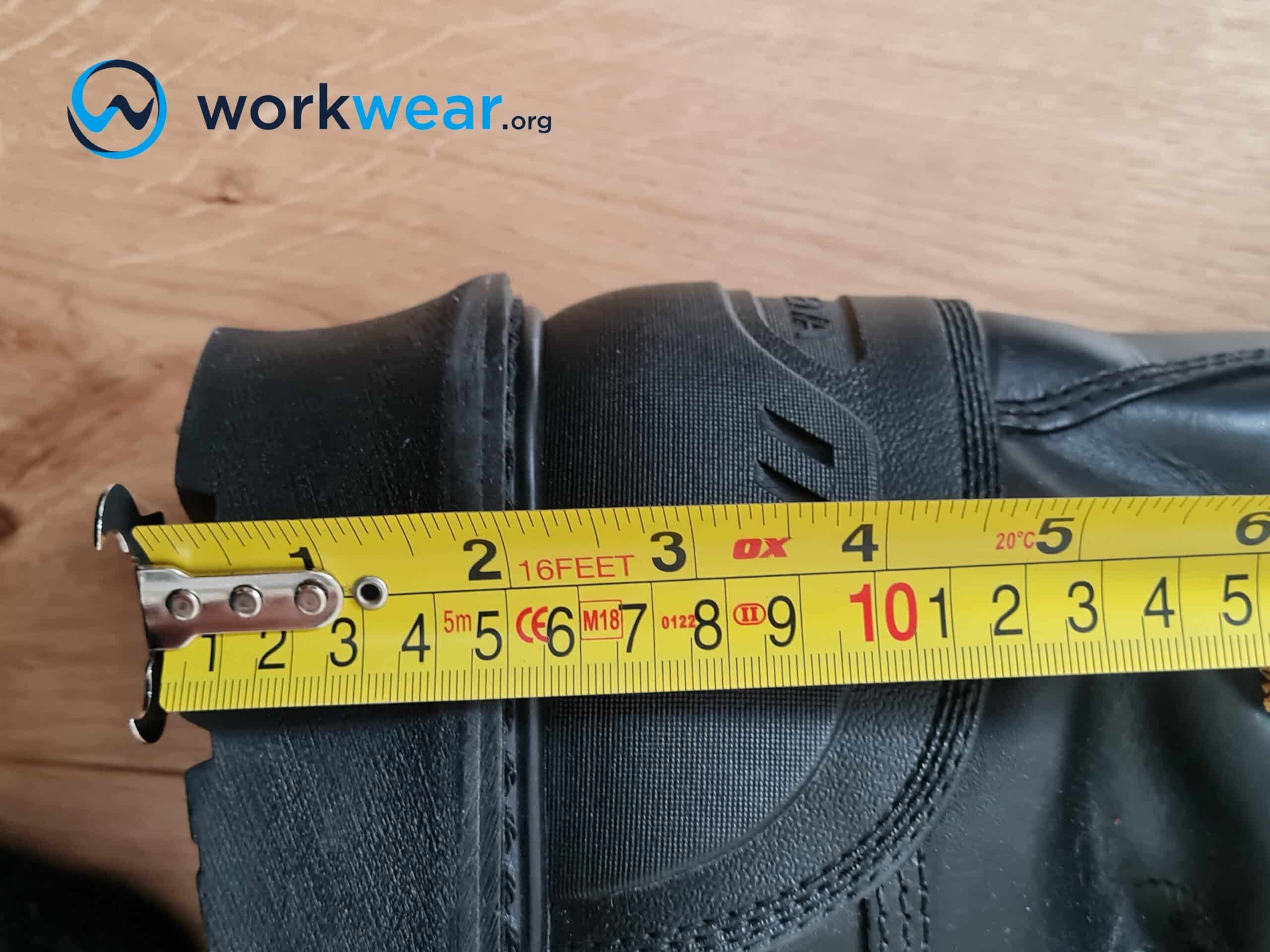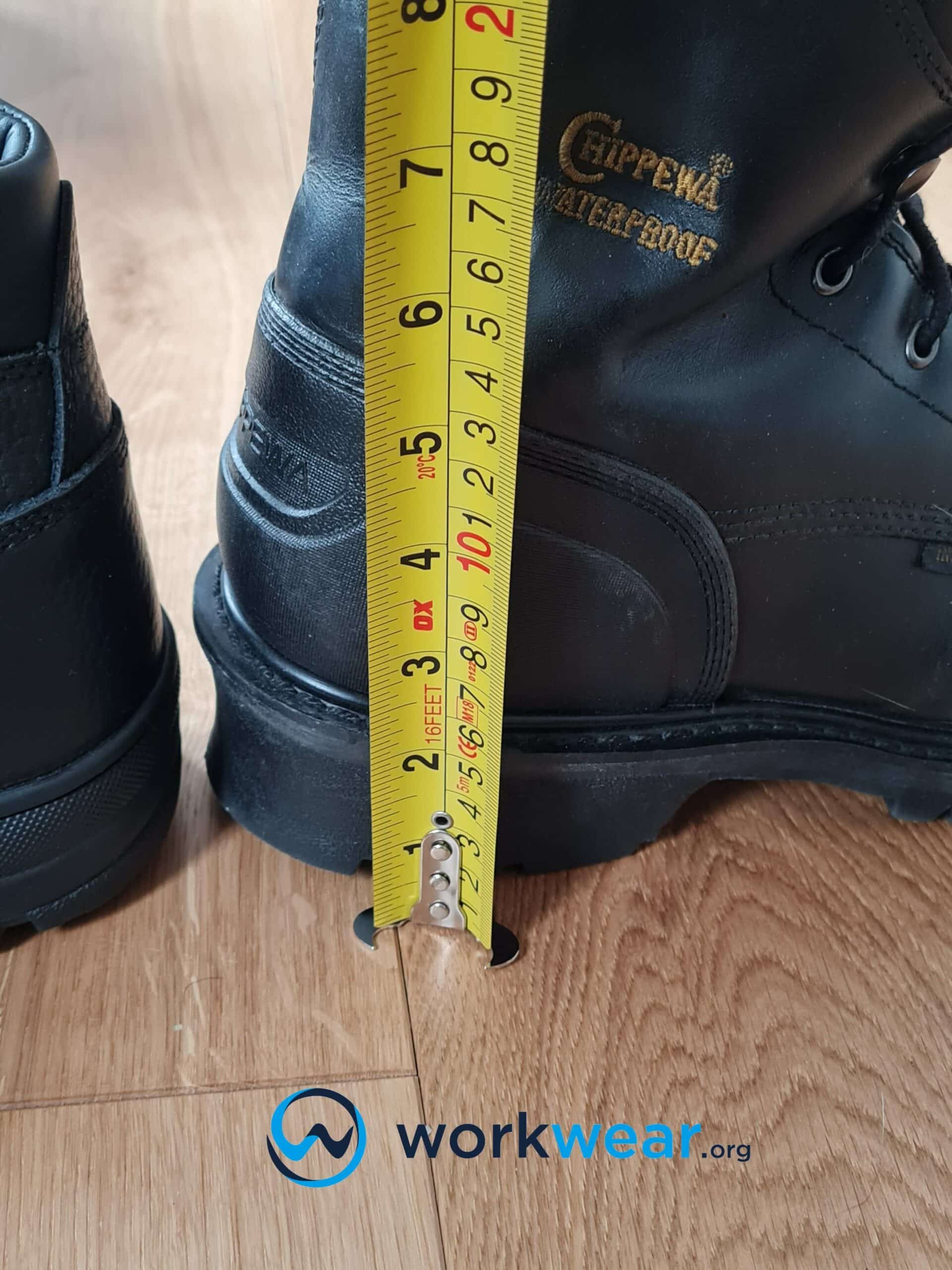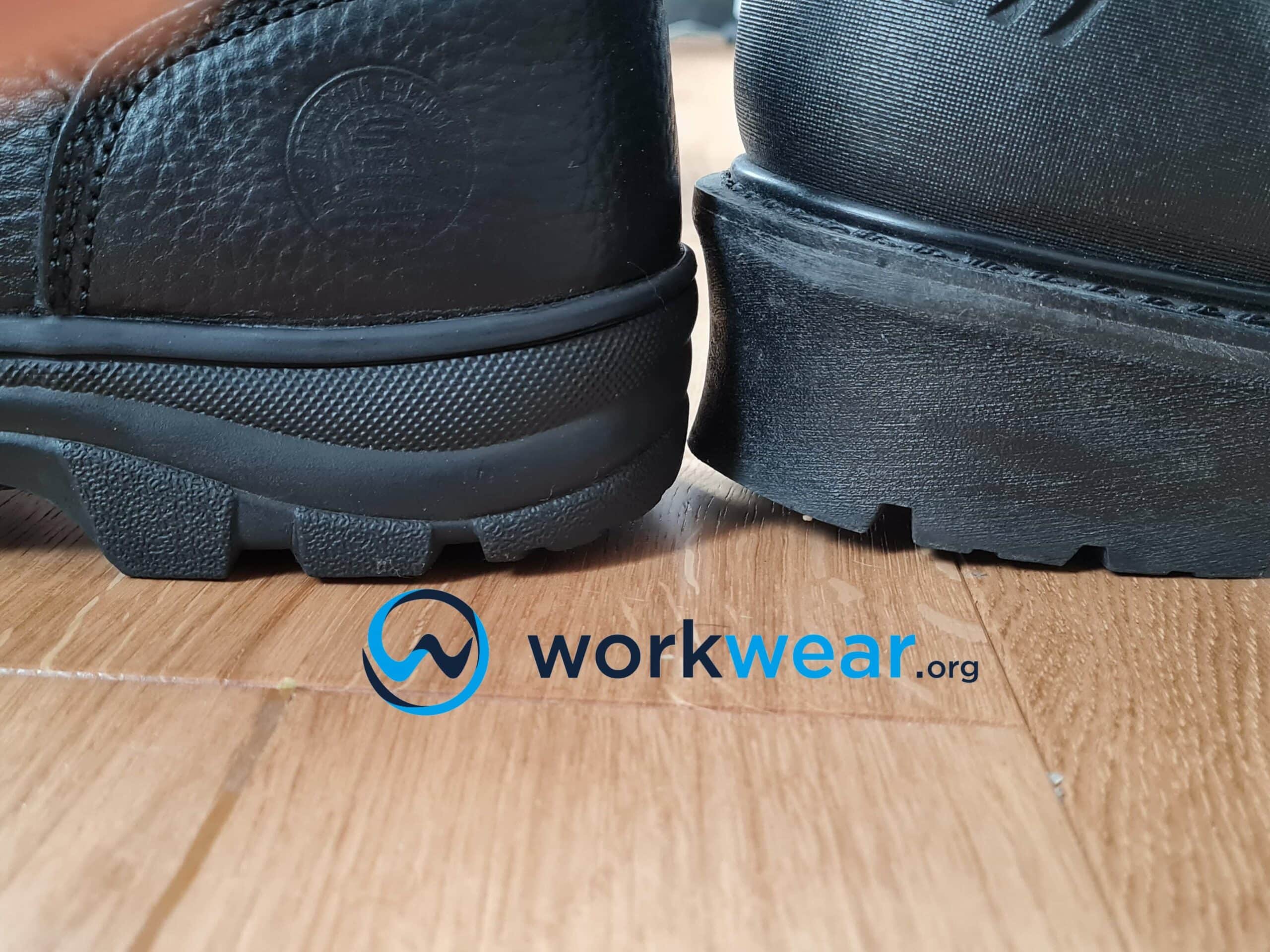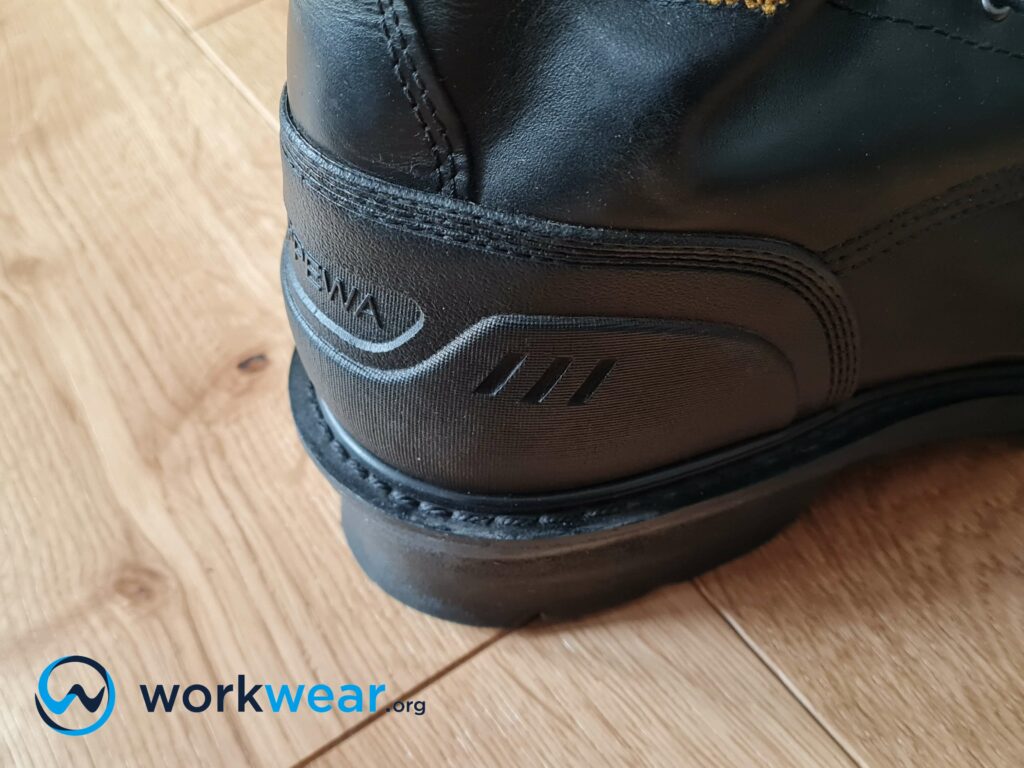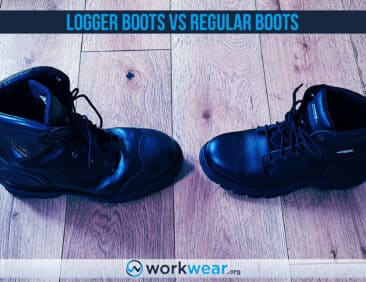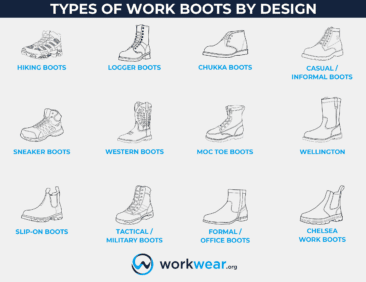Why do Logger Boots Have High Heels? Explained in Detail
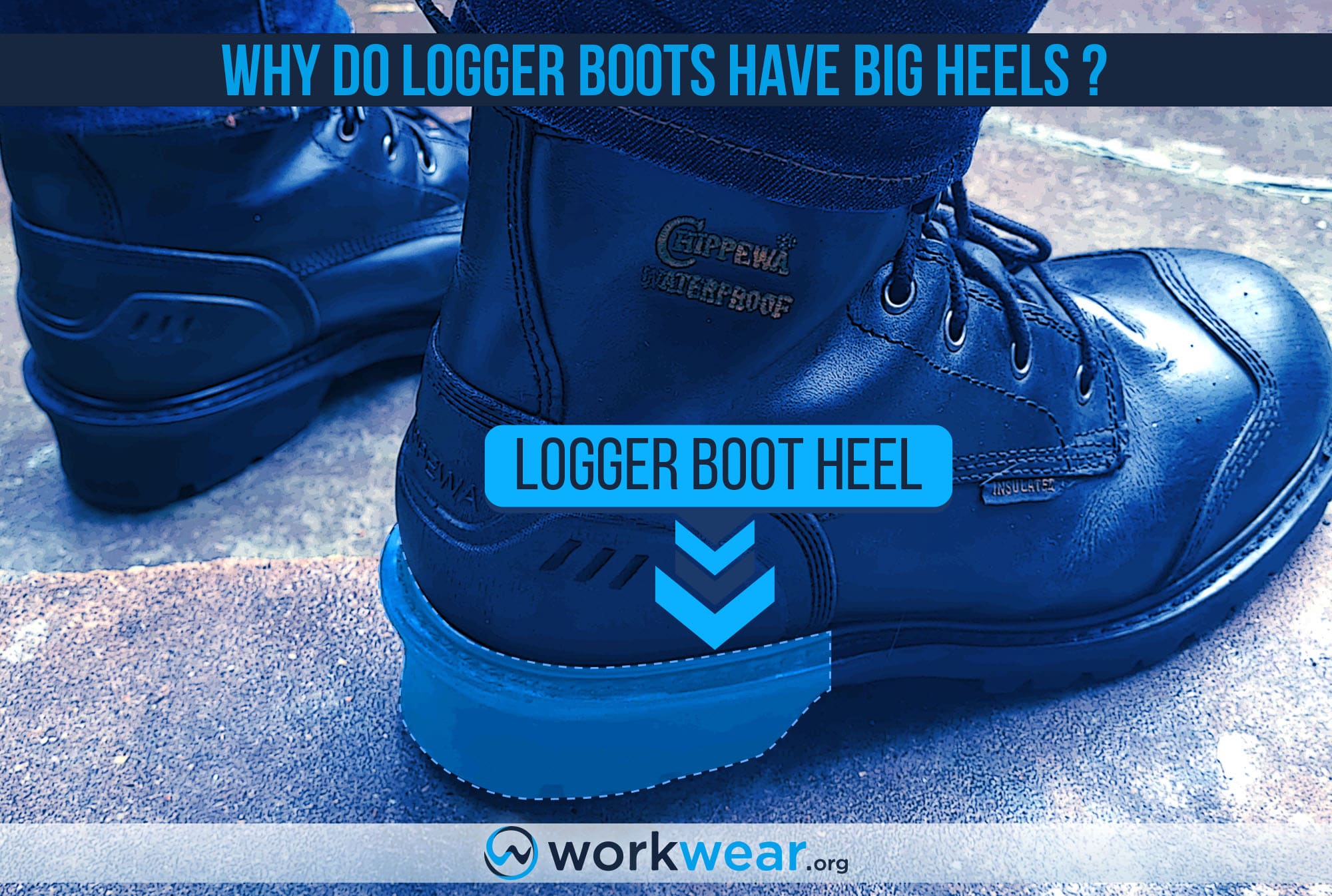
Work boots are built to keep up with various job scenarios, but not all styles can withstand exceptionally challenging conditions. Logger boots have robust designs that are ideal for use in harsh outdoor settings.
They have distinct features that set them apart from conventional work boots, starting from the heels much higher and broader than those in other work footwear.
These heels are not only for aesthetics but are built into the boots to address specific needs in work environments where other work boot styles may not perform as well.
The need for elevated heels lies in the main purpose of logger boots in the logging industry and other jobs in similarly tough settings.
In this article, we’ll discuss the purpose of heels in logger boots, which also have their own benefits and drawbacks.
Why do Logger Boots Have High Heels?
To make climbing more secure/safer
Logger boots’ raised heels are designed for a much better grip on ladder rungs, offering safer experiences while going up and down ladders.
The angled section created by the high heel and the rest of the outsole structure securely catches onto the ladder rung. This keeps the boots in a steady position that may not be possible when using flat or low-heeled footwear.
To elevate the feet from wet ground
The high heels elevate logger boots for a height boost and to prevent liquids from seeping into the footwear from the ground.
The extra elevation is especially helpful when walking over muddy or flooded surfaces, making it easier to maintain dry feet because the wetness can’t easily get into the boots.
To enhance traction
Logger boots have sturdy outsoles that strongly grip the ground, and the raised heels work to enhance the traction even further. In addition, the large heels are built to effectively dig more firmly into loose soil, soft ground, and sloped terrains.
They help keep the feet planted more firmly into the ground to significantly minimize the risk of slipping or falling on tricky surfaces.
To deliver strong arch support
The elevated heels on logger boots also help maintain good arch support, which is needed to align the feet properly.
The high heel keeps the arch supported, protecting it from the brutal impact of heavy work and nonstop walking on hard ground for long hours.
To help stabilize the ankles
The logger boots’ high heels work together with the tall structure to achieve better ankle stability.
The heels help keep the ankles supported securely to protect them from unintentional twisting or sliding – which becomes an even higher risk when navigating sloped or uneven terrains.
The boosted ankle stability from raised heels is also beneficial when going up or down sloped ground conditions that require extra support.
Key Advantages of Logger Boots
Typically, built with heavy-duty designs
Logger boots are typically constructed with considerably more robust structures than average work boots.
They’re often built with thick leather and durable construction to keep up with the most demanding outdoor environments, providing lasting performance that doesn’t easily deteriorate, even with heavy footwear use.
Powerful traction
Logger boots deliver powerful traction, featuring outsoles with aggressive lug patterns and high heels that bite powerfully into the ground.
These boots are designed to have a reliable grip in variable surface conditions – including muddy ground and rocky surfaces. As a result, they make it easier to maintain balance while navigating tricky outdoor surfaces, even while lugging around heavy objects on the job.
Offer more secure footing on ladder rungs
The high heels on logger boots hold onto ladder rungs more firmly than low heels or flat outsoles.
Logger boots keep the feet planted securely onto the rungs, preventing the footwear from slipping to greatly reduce the risk of slipping from ladders.
They also catch onto utility pole rungs more firmly to keep utility men safer while they do their jobs.
Keep the feet dry
Logger boots are designed to stop liquids from getting in so the feet can stay dry in inclement outdoor weather and saturated environments.
These boots have distinct attributes contributing to the water resistance – including raised heels offering enhanced clearance to keep the feet above puddles and muddy ground and high shaft structures blocking wetness from seeping in through the top.
Superior ankle support
Raised heels and tall shaft structures allow logger boots to support the ankles throughout the most labor-intensive tasks outdoors.
These enhancements help maintain the ankles’ correct position inside the boots, stabilizing them so they will not twist or slide easily while walking on slippery or uneven ground.
Hardwearing outsole
Logger boots have thick outsoles that deliver strong as well as remarkable durability.
The sturdy construction makes them much more durable than thinner outsole designs, so they can be relied on to perform well and resist damage for far longer.
Suitable for unstable ground
Logger boots suit harsh outdoor environments where the ground becomes unstable.
Their outsoles are often built with deep treads that firmly dig into the ground, with raised heels that offer stability for more stable walking on variable ground conditions.
Key Disadvantages of Logger Boots
Heavy
The robust materials and construction of logger boots come with a corresponding weight boost.
These boots are typically much heavier than regular work boots.
Their outsoles are thicker, and their shafts are taller, using more materials that make the boots considerably bulkier. The heaviness is offset by the higher level of protection and stability on tricky surfaces, though.
Can be more expensive than other work boots
Logger boots often use premium materials to create long-lasting durability that withstands harsh outdoor elements. The use of such high-quality materials equates to higher price points as well.
Logger boots tend to be more expensive than traditional work boots without enhanced features.
May heat up more easily
Logger boots are taller than the average work boot and are typically made with thick materials for maximum durability.
These qualities result in not much air entering and circulating inside the boots, making them more prone to sweating and overheating after strenuous activities in hot or humid environments.
Can be awkward to walk in
The bulky feel of logger boots can weigh the feet down and cause discomfort while walking or standing for long periods.
The raised heels can also contribute to an awkward way of walking, especially for those not used to wearing high-heeled footwear while working on tough activities and surroundings.
Comparison Table
|
Pros |
Cons |
|
|---|---|---|
| Logger Boots |
|
|
Jobs that Loggers Boots Are Ideal For
Logger boots are suitable for activities in outdoor environments where strong traction and enhanced stability are required, making them ideal for the following jobs:
- Linemen – logger boots help linemen move up and down utility poles more easily and safely, with the heels catching on more securely to prevent the footwear from slipping.
- Heavy Equipment Operators – logger boots with raised heels and strong traction help heavy equipment operators transition from their equipment to more unstable outdoor ground conditions without losing their footing.
- Ranchers/Farmers – farmers and ranchers work in different outdoor surface conditions where the strong traction levels of logger boots perform their best. The high heel also helps secure the boot in place when riding horses, which may be necessary when working farms and ranches.
- Firefighters – logger boots certified for firefighting are sturdy enough to withstand extreme conditions, with the raised heels and strong traction offering better stability on exceptionally slippery or uneven surfaces.
Personal Testing Experience
We had the chance to try out a unique product from Chippewa – a company that has been manufacturing high-quality logger boots for over a century. The Aldarion boot has a waterproof lining to block wetness while promoting good air circulation, keeping the foot dry and fresh all day. It has composite toe protection guarding against serious toe injuries that may result when heavy objects are rolled or dropped on the feet by accident. The outsole has massive treads and a raised heel that digs more firmly into soaked, muddy, or marshy ground for improved walking stability and slip resistance. The boot is also insulated to preserve a warm foot environment in cold weather, but it’s quite heavy and can be exhausting to wear for long periods of walking.
Conclusion
Logger boots are built with high heels that enhance performance in several ways. The raised heels offer improved slip resistance, ankle stability, and arch support and can hold on more securely to ladder rungs for a safer climbing experience. The heels also keep the feet elevated, so they have more clearance from wet ground conditions. Logger boots typically have heavy-duty designs to withstand harsh outdoor conditions, delivering superior performance for a long time while protecting the feet against the elements. In addition, they offer continuous foot support that’s needed while walking on unstable outdoor surfaces. However, they tend to be quite heavy, awkward to walk in, heat up easily and are typically more expensive than regular work boots.
FAQs
- How high are the heels built into logger boots?
- Logger boots typically have raised heels that are 1.5 to 2 inches in height, although some logger boots with shorter or taller heels are built in.
- Are logger boots comfortable for all-day use?
- Logger boots tend to be heavy, but premium quality ones often come with enhanced features to make them more comfortable for long periods.
- Can logger boots with high heels be used for wading in water?
- Yes, especially if the logger boots are waterproof to seal the wetness. The high heels hold the feet higher for better clearance from wet ground conditions.
- Are logger boots with raised heels suitable for indoor work?
- In general, no, they’re not. Logger boots are built to keep the wetness out and provide superior foot stability in harsh outdoor conditions. However, their designs can be too heavy for most indoor work, and the thick outsoles are not the best for walking on hard concrete floors.
678+
Products Reviewed
24+ Years
Combined Experience
500+ Hrs
Field Testing
